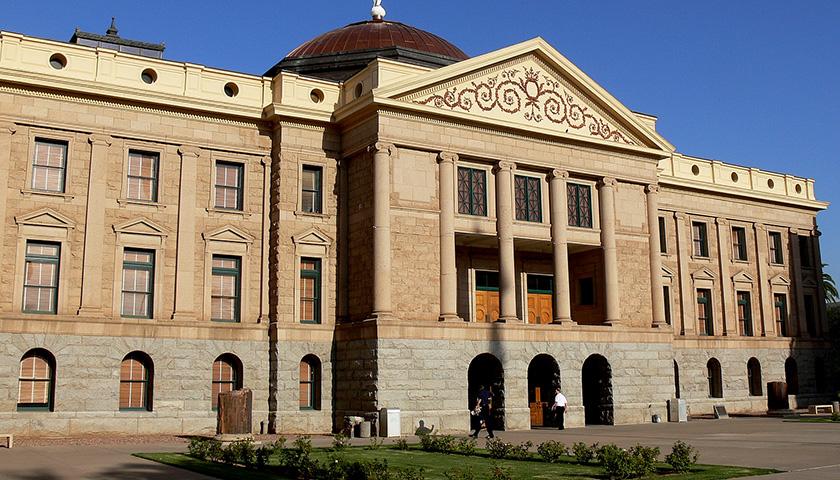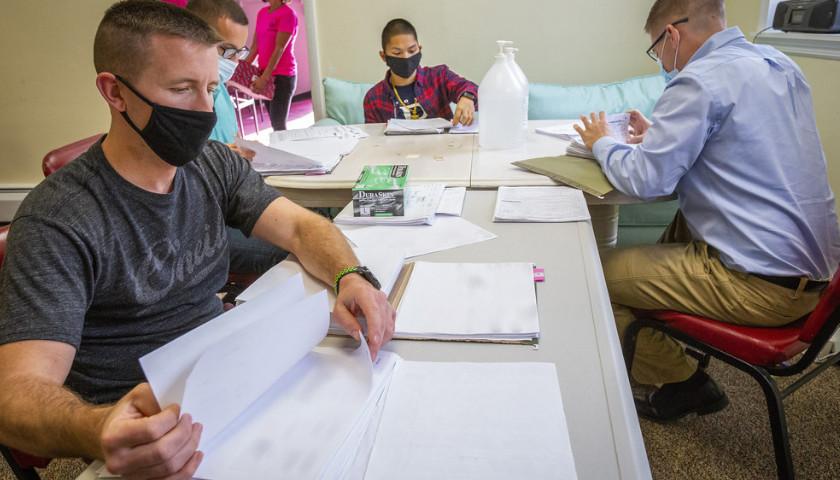Live from Music Row Thursday morning on The Tennessee Star Report with Michael Patrick Leahy – broadcast on Nashville’s Talk Radio 98.3 and 1510 WLAC weekdays from 5:00 a.m. to 8:00 a.m. – host Leahy welcomed Dr. John R. Lott, Jr. founder and president of the Crime Prevention and Research Center (CPRC) to the newsmaker line to discuss his latest finding in the 2020 election by analyzing mail-in and absentee votes per precincts in adjoining counties.
Leahy: We welcome to our newsmaker line again, our good friend John Lott, the head of the Crime Prevention Research Center. Good morning, John.
Lott: Doing great. I hope you’re doing well, too.
Leahy: We are. So I read this piece you had in Real Clear Politics. Let me just read this. New research, by you, is forthcoming in the peer-reviewed economics journal Public Choice, and it finds evidence of around 255,000 excess votes, possibly as many as 368,000 for Joe Biden in the 2020 presidential election.
In six swing States where Donald Trump lodged accusations of fraud, Biden only carried these states – Arizona, Georgia, Michigan, Nevada, Pennsylvania, and Wisconsin – by a total of 313,000 votes. Excluding Michigan, the gap was 159,000. Tell us about this study.
Lott: Well, I’m not trying to re-litigate the 2020 election, but I think given the concerns a lot of people have about possible problems, it’s important to know what went wrong or might have gone wrong to try to avoid this in the future. I mean, you look at surveys.
There’s a survey out this month by Rasmussen Reports that shows that 34 percent of Democrats believe that there was sufficient fraud to alter the outcome of the 2020 election. And obviously, large supermajorities of Republicans and Independents feel the same way.
And that’s pretty corrosive to people being involved in politics if they think that there is a continued problem. And so we had a lot of rules that were violated during the 2020 election. And it’s important, I think, to try to measure the extent of the problem so that we can try to avoid that in the future.
Leahy: John, you’re a statistics guy. Let me ask you this. At some point when we look at all these statistical analyses, people’s eyes glaze over because it’s kind of hard to follow the thread of logic. Now you say evidence of 255,000 excess votes. How do you define an excess vote and how do you measure it?
Lott: So the tests that I have are actually very simple tests. It took a lot of gathering of data, but let me go through the first one, for example, and that is one of the main accusations involved mail-in or absentee ballots.
And so you have counties where fraud was alleged versus a county being right next to other counties where there were no allegations by anybody that there were improper things going on.
Now you can’t really just compare the whole counties in terms of get-out-the-vote efforts or other things, because you have a county like Allegheny County next to Westmoreland in Pennsylvania.
In Pittsburgh, there are huge differences across the whole county … there are big differences in terms of demographics and voter registration, and what have you. And so what I aimed to do was to look at the precincts at the county border.
You have to understand that precincts tend to be very small. In Allegheny County, there are 1,323 precincts just within that one county.
Precincts are very small, very homogeneous areas. And so if I’m looking at two precincts, one on either side of the street that kind of separated the county there, you’re talking about two small areas that are very similar demographically in terms of votes and how they voted.
Simon: Hey, John, Roger Simon, if you don’t mind my breaking in here.
Leahy: Roger Simon, by the way, is an all-star panelist. He’s a columnist with The Epoch Times. He’s in-studio with us as our co-host every Thursday. Roger has a question for you, John.
Simon: You started out by saying you don’t want to re-litigate the election, but when I hear that roughly a quarter of a million votes are essentially illegal, the first thing I want to do is re-litigate the election. (Chuckles)
Lott: We can go and try to do that. But to be honest, I’m worried about what happens in future elections, and that’s what I want to try to concentrate on.
Maybe at some point in the past this would have been something to go after, but I think that this is a significant problem.
Leahy: You want to fix it, John, for the future. So your methodology here is you’ll take two adjacent counties. I’m guessing that some of the counties that you’re looking at got a lot of money from Mark Zuckerberg’s Center for Technology and Civic Life to do kind of, ‘election administration.’ A lot of critics call that “get out the vote for the Democrats.” Am I right in that?
Lott: Yes, sure. So if I can just finish what I was trying to say earlier. So you have these two precincts that are very similar. They vary in just fractions of a percentage point in terms of how they voted, in terms of in-person or absentee votes in 2016, for example.
And if you look at how they voted in 2020, in terms of the in-person votes, they were also very similar. But in terms of the mail-in ballots, you find a big gap as soon as you walk across the street or in the county where fraud was alleged.
So one of the things just to point out that is the in-person votes are counted at the precinct level. The issues involving fraud or other things were occurring for the absentee or mail-in ballots that were counted centrally at some central counting facility there.
And so it’s kind of hard. If you’re going to go and have some get-out-the-vote effort, what you’re going to do is, it’s a statewide campaign. You don’t care about winning an individual precinct that’s there.
And you’re going to target precincts based on their voter registration, based on the type of voters, whether they’re black Democrats or whatever you’re aiming for to be able to go and get.
You can drive across the street between these counties and you’re not going to notice any difference in terms of the demographics or anything when you’re talking about these very tiny areas.
Leahy: Explain to us what the excess vote in these two precincts would have been. What was the evidence there, John?
Lott: Well, what you do is you compare the 2020 election outcomes in terms of the absentee ballots or mail-in ballots between these two precincts relative to the relative shares they got in the in-person votes and the absentee votes in previous elections.
Listen to the full interview:
– – –
Tune in weekdays from 5:00 – 8:00 a.m. to The Tennessee Star Report with Michael Patrick Leahy on Talk Radio 98.3 FM WLAC 1510. Listen online at iHeart Radio.






The very real probably of extensive 2020 voter fraud is the elephant in the room that no one wants to acknowledge. Why? What is the downside to shining light on serious corruption? This smells to high heaven.